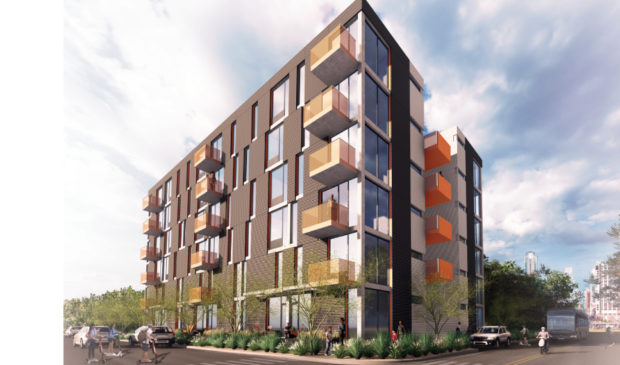More energy-efficient homes are straining Austin Energy’s revenues
Friday, February 21, 2020 by
Jessi Devenyns Austin Energy began its year with higher-than-expected revenues thanks to warmer temperatures this fall.
“We’re about 5 percent over the forecast for the quarter in consumption,” said Stephanie Koudelka, the utility’s principal accounting manager, at the Feb. 10 meeting of the Electric Utility Commission. This increase in consumption translated to a 2 percent bump in operating revenue, a total of $328 million.
However, when expenses were accounted for, the energy utility experienced a $54 million deficit for the quarter.
According to Koudelka, more energy-efficient homes and a higher concentration of multifamily units are making it more difficult for Austin Energy to turn a profit on its energy sales. “Seventy-six percent of residential consumption inside the city of Austin is sold below our cost to serve,” according to data she presented.
Austin Energy makes a profit when it sells energy to customers in the fourth and fifth tier of its five-tiered residential billing structure. Rates in those tiers are “significantly above cost” of service, but consumption in these categories has declined 14 percent since 2012.
This decrease has occurred even as the number of customers has increased by 13,000 since the first quarter of last year.
Koudelka attributed the decline to an increase in multifamily construction, which she says is 50 percent more efficient in its energy use. Multifamily units now make up the majority of the utility’s service territory. The result is that “it takes Austin Energy about 11 months to break even in the fiscal year because of this trend.”
To alleviate the financial strain, Austin Energy is considering redesigning its rate system for 2022. “We’re not seeing those revenues in tiers four and five, so we’re thinking three tiers might be a better approach,” said Mark Dombroski, chief financial officer of Austin Energy. This year, the utility will begin its initial analysis of rate change options.
Another consequence of the five-tier system is the billing inequities it has caused for different populations. Those enrolled in the utility’s Customer Assistance Program – mostly low-income households that participate in state, federal or local assistance programs and whose rates are correspondingly lowered by the utility – are using 15 percent more energy than non-CAP customers.
“The intent of the rate structure was to have high-income homes … subsidize the low connection cost that everyone benefits from,” said Commissioner Matt Weldon. Instead, he said the reality is that older homes are less efficient than newer ones and therefore those homeowners and renters end up shouldering the burden of the service cost.
“The expense of the system slops over to the poor people who can’t afford it,” said EUC Chair Cary Ferchill.
While the system has disproportionately placed the financial burden on vulnerable households, it has also decreased the overall consumption of energy. From 2012-18, overall kilowatt-hour use per billing cycle has decreased by 6 percent.
Even with a changing market, Koudelka said according to the balance sheet, “We’re trending pretty close to actuals on budget.”
In fact, the utility had a 7 percent variation between budgeted balance sheet and actuals for the quarter, an improvement over the 33 percent variance between budget and actuals from this time last year. Additionally, the debt to equity ratio has decreased by 7 percent in the 12 months ending Dec. 31.
Photo courtesy of Habitat for Humanity.
The Austin Monitor’s work is made possible by donations from the community. Though our reporting covers donors from time to time, we are careful to keep business and editorial efforts separate while maintaining transparency. A complete list of donors is available here, and our code of ethics is explained here.
You're a community leader
And we’re honored you look to us for serious, in-depth news. You know a strong community needs local and dedicated watchdog reporting. We’re here for you and that won’t change. Now will you take the powerful next step and support our nonprofit news organization?











